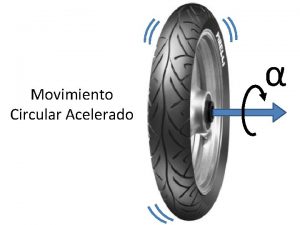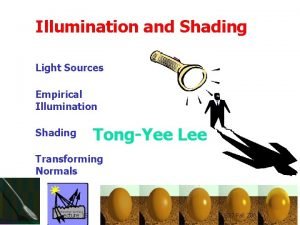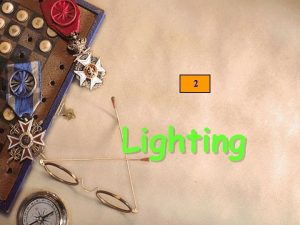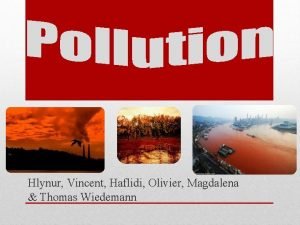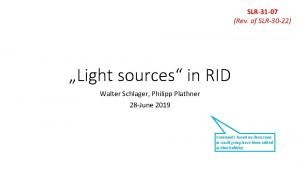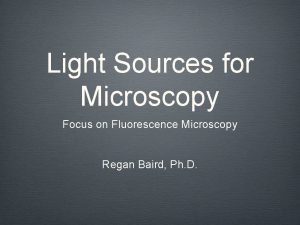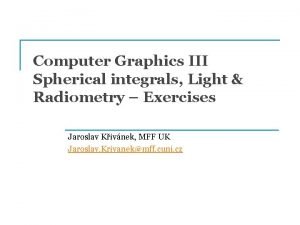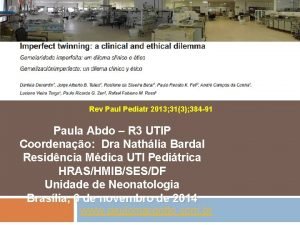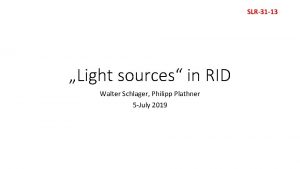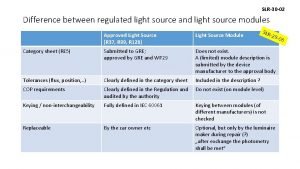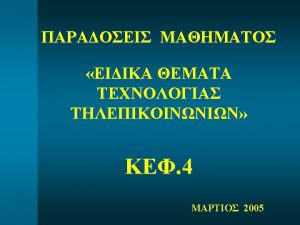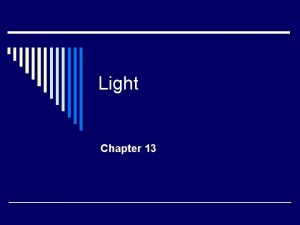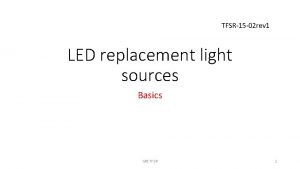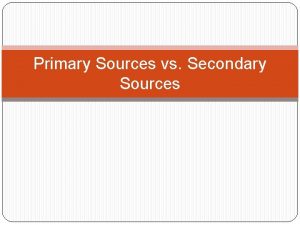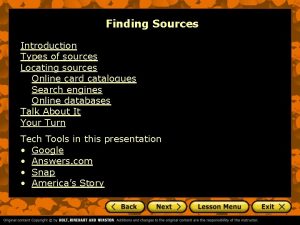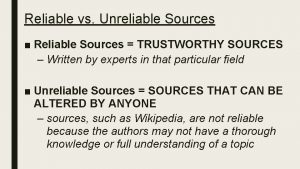SLR31 07 Rev of SLR30 22 Light sources





![Annex X „Testing [with respect to light sources]“ General OPTION #1 OPTION #2 The Annex X „Testing [with respect to light sources]“ General OPTION #1 OPTION #2 The](https://slidetodoc.com/presentation_image/1e4653350637776870fe9d0addf43361/image-6.jpg)
![Annex X „Testing [with respect to light sources]“ filament/incandescent technology … OPTION #1 OPTION Annex X „Testing [with respect to light sources]“ filament/incandescent technology … OPTION #1 OPTION](https://slidetodoc.com/presentation_image/1e4653350637776870fe9d0addf43361/image-7.jpg)
![Annex X „Testing [with respect to light sources]“ UN approved HID… OPTION #1 OPTION Annex X „Testing [with respect to light sources]“ UN approved HID… OPTION #1 OPTION](https://slidetodoc.com/presentation_image/1e4653350637776870fe9d0addf43361/image-8.jpg)
![Annex X „Testing [with respect to light sources]“ LED technology OPTION #1 OPTION #2 Annex X „Testing [with respect to light sources]“ LED technology OPTION #1 OPTION #2](https://slidetodoc.com/presentation_image/1e4653350637776870fe9d0addf43361/image-9.jpg)
![Annex X „Testing [with respect to light sources]“ Unknown technology and non-approved HID … Annex X „Testing [with respect to light sources]“ Unknown technology and non-approved HID …](https://slidetodoc.com/presentation_image/1e4653350637776870fe9d0addf43361/image-10.jpg)





- Slides: 15

SLR-31 -07 (Rev. of SLR-30 -22) „Light sources“ in RID Walter Schlager, Philipp Plathner 28 -June 2019 Comments based on discussion in small group have been added in blue bubbles

„ 4. 5. Light sources“ • With the agreed objective to allow all light source technologies in all lamps (functions) the text of section 4. 5. 1. condenses significantly 4. 5. Light sources 4. 5. 1. Restrictions on light sources New core text The lamps shall only be equipped with UN approved light source(s), provided that no restriction on the use is made at the time of application for type approval, and/or light source module(s), and/or nonreplaceable light source(s). Such restriction needed? [Where more than one light source is used to provide a beam, the correlated colour temperatures of these light sources shall not deviated more than [1000] K. ] [In the case of LED modules where the requirements of Annex 9 shall apply; compliance with these Would become requirements shall be tested. ] part of test annex Additional light sources may be used inside the “passing beam headlamp” to contribute to bend lighting and for the purpose of generating infrared radiation. … Leftovers from old Where more than one light source is used to provide the driving beam, these light sources shall be 4. 5. 1. operated simultaneously. In such case … To be carried over ? 4. 5. 2. General requirements for light sources (e. g. fixation, 2000 lm limit, …) To be simplified as well. 4. 5. 3. Specific requirements for light sources (e. g. minimum source flux, …) (Partly) Depends on beam pattern modifications

„ 4. 6. Testing of the lamp“ • Different from the sections 4. 7. , 4. 8. , … the section 4. 6. is covering testing aspects dealing with light sources only”. This technology-depending test requirements are moved to a new annex. Body Text: “Tests shall be carried out according to Annex X. ” 4. 6. Testing of the lamp with respect to light sources 4. 6. x. In the case of … (filament, LED, non-replaceable, …, test voltages, …) all in 4. 6. to be carried over to Annex X 4. 7. Testing of light transmitting components … 4. 8. Testing of cut-off … 4. 9. Tests for stability of photometric performance … … … What to do with other kind of testing requirements?

„ 5. 1. Driving beams“ Specific requirements are added per lamp (function), listing the time interval when the beam requirements have to be met OPTION #1 OPTION #2 5. 2. Technical requirements concerning driving-beam of the Class … 5. 1. x. Photometric requirements Referring to Figure A 4 -II the luminous intensity distribution of the driving-beam shall meet the following requirements … [at four seconds, min. 37, 500 cd in HV in case of producing driving-beam only] Referring to Figure A 4 -II the luminous intensity distribution of the driving-beam shall meet the following requirements … 5. 1. x. Specific timing requirements At [1] second after activation the driving-beam shall meet the luminous intensity requirements. This is current requirement for HID driving beams. - apply for all driving beams? - delete? - …? After comments in small group: Proposal to delete “special HID requirements” in device regulation

„ 5. 2. Passing beams“ Specific requirements are added per lamp (function), listing the time interval when the beam requirements have to be met OPTION #1 OPTION #2 5. 2. Technical requirements concerning headlamps to provide a passing-beam of Class … 5. 2. x. Photometric requirements The passing-beam shall meet the luminous intensities at the test points referred to in Table 8 and in Figures A 4 -V or A 4 -VI … [at four seconds, min. 3, 100 cd in 50 V] The passing-beam shall meet the luminous intensities at the test points referred to in Table 8 and in Figures A 4 -V or A 4 -VI … 5. 2. x. [Timing requirements] At [4] seconds after activation the passing-beam shall meet the luminous intensity requirements. This is current requirement for HID passing beams. - apply for all driving beams? - delete? - …? After comments in small group: Proposal to delete “special HID requirements” in device regulation
![Annex X Testing with respect to light sources General OPTION 1 OPTION 2 The Annex X „Testing [with respect to light sources]“ General OPTION #1 OPTION #2 The](https://slidetodoc.com/presentation_image/1e4653350637776870fe9d0addf43361/image-6.jpg)
Annex X „Testing [with respect to light sources]“ General OPTION #1 OPTION #2 The luminous intensity distribution is measured and checked for compliance after photometric stability. The luminous intensity distributions at other points in time are calculated from the luminous intensity distribution measured after photometric stability by applying at each test point the ratio of luminous intensities measured at the “reference point” of the lamp (function) under consideration. The luminous intensity distribution is measured and checked for compliance after photometric stability. The „reference point“ [to be monitored over the whole measurement period and to be used for calculation of beam intensities at certain points in time] is: • For high beam: HV • For low beam: 50 V • For front fog: [XX] • For Cornering lamps: [YY] This means that option #2 is not getting explicit on the way to measure beam intensities before photometric stability is reached … and covers the existing requirements from 4. 6. x In the case of replaceable filament light sources … In the case of modules … After comments in small group: There was no objection to describe the test procedure. i. e. copy text from option #1 to option #2 on this slide
![Annex X Testing with respect to light sources filamentincandescent technology OPTION 1 OPTION Annex X „Testing [with respect to light sources]“ filament/incandescent technology … OPTION #1 OPTION](https://slidetodoc.com/presentation_image/1e4653350637776870fe9d0addf43361/image-7.jpg)
Annex X „Testing [with respect to light sources]“ filament/incandescent technology … OPTION #1 OPTION #2 In case of filament technology [no special requirement] o All lamps (functions) are deemed to comply with minimum and maximum intensity requirements in the period between [200] milliseconds after activation and photometric stability, if the values measured after photometric stability are compliant. o In case of a lamp (function) having specific requirements before [200] milliseconds after activation, additional tests are carried out at the required point(s) in time. After comments in small group: First bullet point could also be included in Option #2 on this slide After comments in small group: Proposal to delete the second bullet point for filament technology
![Annex X Testing with respect to light sources UN approved HID OPTION 1 OPTION Annex X „Testing [with respect to light sources]“ UN approved HID… OPTION #1 OPTION](https://slidetodoc.com/presentation_image/1e4653350637776870fe9d0addf43361/image-8.jpg)
Annex X „Testing [with respect to light sources]“ UN approved HID… OPTION #1 OPTION #2 In case of UN approved gas-discharge light sources [no special requirement] o All lamps (functions) are deemed to comply with minimum and maximum intensity requirements in the period between [4] second after activation and photometric stability, if the values measured after photometric stability are compliant. o In case of a lamp (function) having specific requirements before [4] second after activation, additional tests are carried out at the required point(s) in time. After comments in small group: First bullet point could also be included in Option #2 on this slide After comments in small group: Add test requirements for option #2: For high beam (+ other functions ? ), test shall be performed additionally at [1] second.
![Annex X Testing with respect to light sources LED technology OPTION 1 OPTION 2 Annex X „Testing [with respect to light sources]“ LED technology OPTION #1 OPTION #2](https://slidetodoc.com/presentation_image/1e4653350637776870fe9d0addf43361/image-9.jpg)
Annex X „Testing [with respect to light sources]“ LED technology OPTION #1 OPTION #2 In case of LED technology The luminous intensity distribution is measured and checked for compliance additionally after 1 minute. o All lamps (functions) are deemed to comply with minimum and maximum intensity requirements in the period between [200] milliseconds after activation and photometric stability, if the values measured at [1] minute after activation and after photometric stability are compliant. o In case of a lamp (function) having specific requirements before [200] milliseconds after activation, additional tests are carried out at the required point(s) in time. After comments in small group: First bullet point could also be included in Option #2 on this slide After comments in small group: Proposal to delete the second bullet point for LED technology
![Annex X Testing with respect to light sources Unknown technology and nonapproved HID Annex X „Testing [with respect to light sources]“ Unknown technology and non-approved HID …](https://slidetodoc.com/presentation_image/1e4653350637776870fe9d0addf43361/image-10.jpg)
Annex X „Testing [with respect to light sources]“ Unknown technology and non-approved HID … OPTION #1 OPTION #2 In case of another light source technology or non-UN-approved gas discharge light sources The luminous intensity distribution is measured and checked for compliance o The luminous intensity requirements are tested and checked for compliance at all points in time starting with the first point in time given in the lamp (function) specific timing requirements. After comments in small group: Test additionally: - High beam from [1] seconds onward - Low beam from [4] seconds onward - etc. Today's RID has no possibility to allow “unknown” technologies. How to handle this in future?

Comments received with respect to slides 1 - 10 • Comment from expert Nr 1 (Eric Blusseau) • Comment from expert Nr 2 (Thomas Bauckhage) • Comment from expert Nr 3 (Gert Langhammer)

Comment from expert Nr 1 My view: the optical requirements must be achieved at any time of activation of the lamps To do so , we can measure/calculate the luminous intensity at [1. 0 s], 1 mn, stability and the 3 tables shall achieve the photometrical requirements. We have to keep in mind that: • RID stage 2 is a step forwards. • It will enter into force in 2022. And I guess that we will have a transitional period of ~5 years. So the regulation shall be mandatory in 2027 (in 8 years) • I assume that in 2027, no project with HID will be developed, anymore. HID will be outdated at that moment. • Any technology has to achieve the requirements defined in the regulation • The regulation does not have to adapt the requirements to the limits of a technology especially if it is not used any more in the future. So, why keeping in board this odd requirement on 25% of the stabilized values between 1 s and 1 mn? My proposal is to not consider anymore in the RID Stage 2, the specific technical constraints of HID. In that case the regulation will be completely technologically neutral.

Comment from expert Nr 2 First, thank you for your detailed approach to solve the light source issue. Second, I agree to expert Nr 1’s opinion that HID will be not anymore an issue after 2027. Third, I don’t like the idea of time restrictive requirements to be added to the device regulations as they include the idea that there might be a problem existing which was not touched before. Maybe we can use another way of changing the requirements. Add photometric measurements for 1 min and for photometric stability for each and every function and light source. Add a sentence, that a filament light source is photometric stable after 1 min as per definition (to exclude double measurements). All other light sources (LEDs and unknown new technologies) will be measured following the existing procedures with one value at 1 min and a full measurement after photometric stability. Alternative: Taking into account the two conditions for the regulatory texts as they are today. a) Some functions may not use every kind of light source -> regulated in the device regulations, Par. 4. -> this needs to be changes b) Some functions may not use every kind of light source -> regulated in the light source regulations, tables. -> this stays as it is We now want to remove a) but we are not touching b). Question 1: Why do we need to add explicit requirements to exclude light sources via photometric provisions in the device regulations after allowing all of them to be used? Question 2: Why don’t we just exclude specific light sources using the restriction tables in the light source regulations as it is already done and not changed? So, keep the proposal as it is, using first sentence of Par. 4. 5. 1. and just rearrange the tables. ****************** follow-up, after comment from expert Nr 3 was received ****************** I fully support the proposal from expert Nr 3. Remove the extra provisions for functions using HID light sources -> technologically neutral. Add only testing requirements for different light source technologies in Annexes -> All functions have to be tested after 1 min and photometric stabilization. And some light source technologies are deemed to fulfill without extra testing i. e. filament light sources. So the requirements are neutral and objectively testable but some or unnecessary from a testing point of view.

Comment from expert Nr 3 Principally I agree with expert Nr 1 and expert Nr 2 remarks on your presentation – especially with regard to the HID light sources. On the other side I would not really like to exclude them even there will be no expected future use we do not really know what will be happening. On the other side we do want to develop technology neutral regulations and not exclude any light source technology. My proposal (that we already discussed in Brussels): 1) Regarding HID run-up provisions we can consider the requirements in R 99 as sufficient in order to have a safe behavior – we do not have the necessity to repeat this in RID and could remove these provisions accordingly. 2) Regarding paragraph 5: as we currently do not have any time-related requirements per function (except for sequential direction indicators) my proposal is not to introduce such kind of requirements either. The idea: all functions have to fulfill photometry with stabilized light sources (but in my opinion there is no need to mention this in paragraph 5). Just the different testing provisions for different light source technologies shall be laid down in the testing annex – where e. g. it is stated for devices with LED light sources to be measured after 1 min and stabilization. Could this be a basis for an agreement?

“High level” Summary Both, Option #1 and modified Option #2, require e. g. high beam compliant after [1] s • In Option #1 it is written in 5. x. • In modified Option #2 it is written in Annex X No difference between Option #1 and Option #2: • For UN approved light sources, testing effort on device level is reduced (because it is tested on light source level, e. g. 1 min in R 128 and 1 s/4 s in R 99). • For unknown technology, full testing over whole time period is required
 Velocidad angular ejemplos
Velocidad angular ejemplos Light light light chapter 22
Light light light chapter 22 Chapter 22
Chapter 22 Light light light chapter 23
Light light light chapter 23 Print sources of information
Print sources of information Important of water management
Important of water management The primary source of light is
The primary source of light is Illumination formula
Illumination formula Coherent and incoherent sources of light
Coherent and incoherent sources of light Light sources found indoors
Light sources found indoors Sources of light
Sources of light Primary and secondary source of light
Primary and secondary source of light Light sources
Light sources Light sources for fluorescence microscopy
Light sources for fluorescence microscopy Light sources
Light sources Rev paul pediatr
Rev paul pediatr
